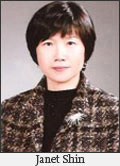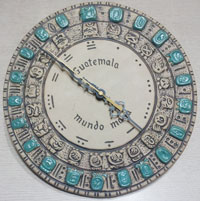Was Dec. 21 the Doomsday?
“For the Maya a new era is starting now. May enlightenment continue to enrich your lives.”
This is what I received from a Mexican friend, an avid feng shui practitioner with a keen passion for Oriental philosophy. I also have a personal affection for the Mayan Civilization and have visited ancient ruins such as Tikal several times.
In terms of calendars, there is something in common between the East and West. The solar calendar is largely followed globally. In general, the way days are counted in a year seems quite similar, namely most of them consider there are 365 days a year.
The Maya calendar has cycles and counts or varying length. A 260-day count was used alongside a rough 365-day solar year and within them were smaller cycles of 13 and 20 days. Meanwhile, ancient China was believed to primarily follow a lunar calendar. But once we go deeper to study reality, they actually arranged each month based on solar motion. There were 24 divisions of the year (14-16 days each), which combined the lunar and solar calendars. It was not a problem to count days of a month by the lunar calendar. However it couldn’t represent seasonal weather changes well, which are influenced by solar motion. Accordingly, each term actually falls on a specific solar date. Farming and other important rituals were followed by these 24 terms. Saju also uses these 24 divisions to read our destiny.
“Cheongmyeong,” for example, is the fifth division that falls on April 5 of the solar calendar. It is an important day for the preparation of rice farming and people visit ancestors’ graves to mow and tidy up the sites. “Dongji,” the 22nd division, is a day of winter solstice and is the shortest day and the longest night. It fell on Dec. 21, last year. It literally stands for reaching winter, when the yin energy reaches its climax. According to “taiji,” there is a birth of yang energy at the highest concentration of yin. So dongji denotes not only the extreme point of yin but the time to prepare for the new season, an ultimate beginning of a new life.
Is it just a coincidence that both the Maya and oriental calendar make reference to Dec. 21?
What we must be aware of is that there was a clear perception of repetition or a linear (past-present-future) concept of time. The cyclical universe, birth-death-rebirth is reflected in our understanding of time.
In one Oriental religious belief, some people consider that an era of the universe is 129,600 years and we are passing through the first half of 64,800 years. The first quarter represents the birth of human beings, or called spring of the year. There were human civilizations and population growth in the second quarter, or summer. Human will reap the cultural development in the fall or the third quarter and take a rest preparing for the next spring in the fourth quarter. There are 32,400 years in each quarter to add up 129,600 years total.
The first quarter: Birth
The second quarter: Growth
The third quarter: Unification and convergence
The fourth quarter: Relaxation and preparation for the next era
However they define it, more to the point is the eternal cycle of time. This is well described in the saju theory of 12 stages of life. Saju doesn’t elucidate our life from birth to death. Instead saju recognizes our life in relation with reincarnation.
1. Birth
2. Bathes after birth: Childhood
3. Getting dressed: Youth
4. Graduation
5. Prime years
6. Deterioration
7. Sickness
8. Death
9. Burial
10. Vanishment
11. Embryo
12. Pregnancy (then circulate to the first stage birth)
Referring to the eighth stage of death, one’s soul is still alive and wandering until it breaks off its karma with this world, which is stage 10. Then it enters into a woman’s womb to start another life.
In conclusion, if anyone expected 2012 an apocalypse year according to the Maya calendar as it marked the end of a 5,126-year era, they were mistaken. Of course, it has already been proved as Dec. 21 has passed without portent. The world survives “doomsday.” The wheel of time, either by Oriental or in Maya calendars is turning in perpetuity.
Information: Are you interested in learning more about the ancient Chinese teaching about the “Four Pillars of Destiny”? For further information, visit Janet’s website at www.fourpillarskorea.com, contact her at 010-5414-7461 or email janetshin@hotmail.com.
The writer is the author of “Life’s Secrets”. <The Korea Times/Janet Shin>



























































